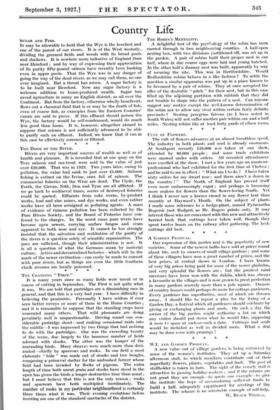THE CHANGING " FIRST."
It is many years since so many fields were uncut or in course of cutting in September. The First is not quite what it was. We are told that partridges are a diminishing race in general, and that this is a very bad year. I have difficulty in believing the pessimists. Personally I have seldom if ever seen better coveys or more of them in the Home Counties and it is reasonable to suppose that the standing crops have concealed many others. That wild pheasants are doing peculiarly well is unquestionable. Driving round one con- siderable partridge shoot—and making occasional raids into the middle—I was impressed by two things that had nothing to do with the partridges. One was the exceeding beauty of the scene, due largely to the immense number of fields adorned with stooks. The other was the hunger of the marauding birds. Many sheave3 were much more than deci- niated—chiefly by sparrows and rooks. In one field a most elaborate " hide " was made out of stooks and tree boughs, composing a primeval shelter for the ambushed farmer whose field had been invaded by flocks of pigeons. The extra length of time both uncut grain and stooks have stood in the open has given the birds a longer destructive time than usual ; but X must believe that this is not the only reason ; rooks and sparrows have both multiplied inordinately. The number of rooks in my particular neighbourhood is certainly three times what it was. Their evening evolutions before roosting are one cif the standard spectaelei of the district.










































 Previous page
Previous page